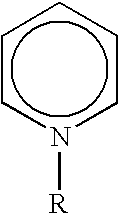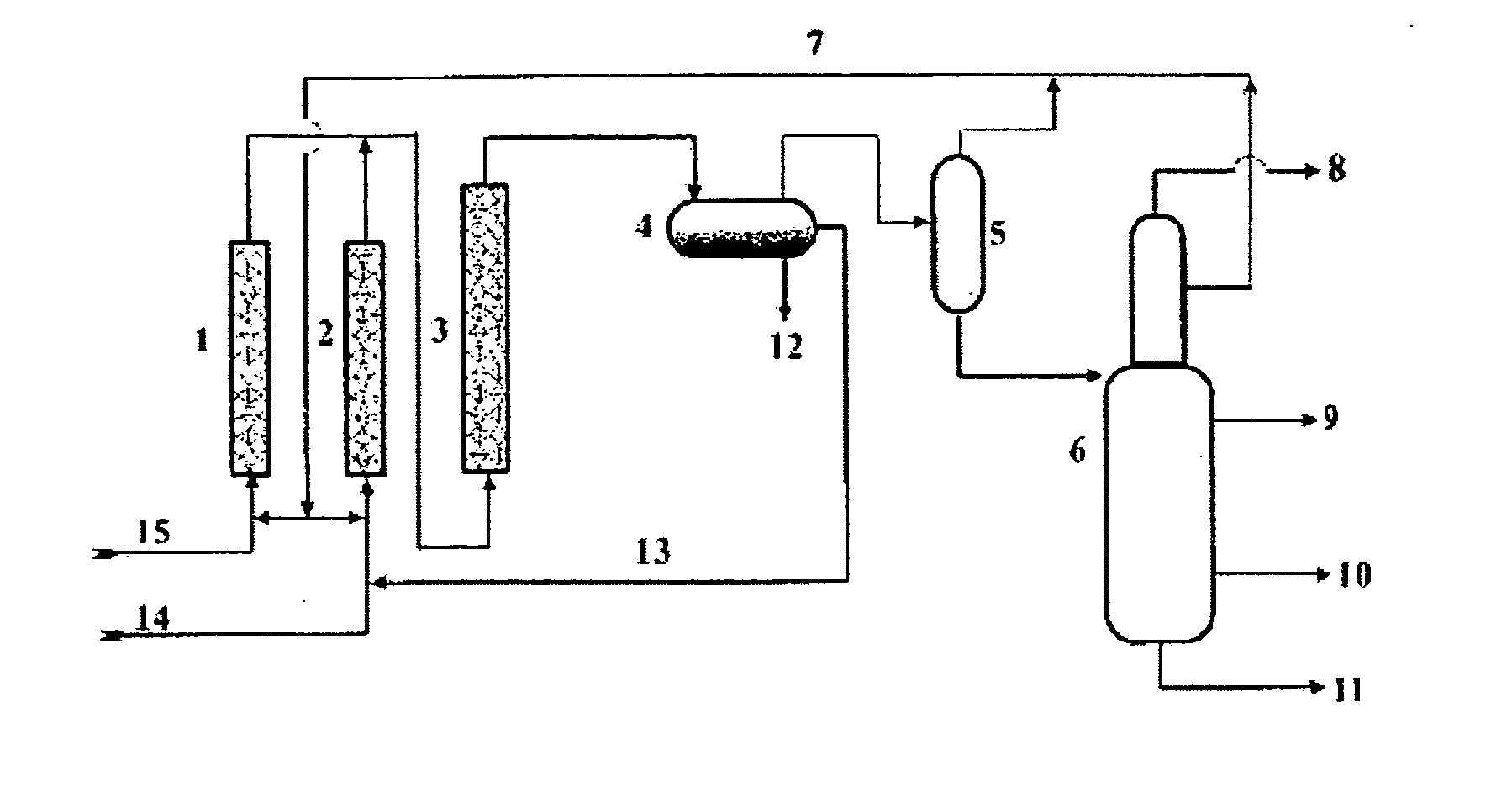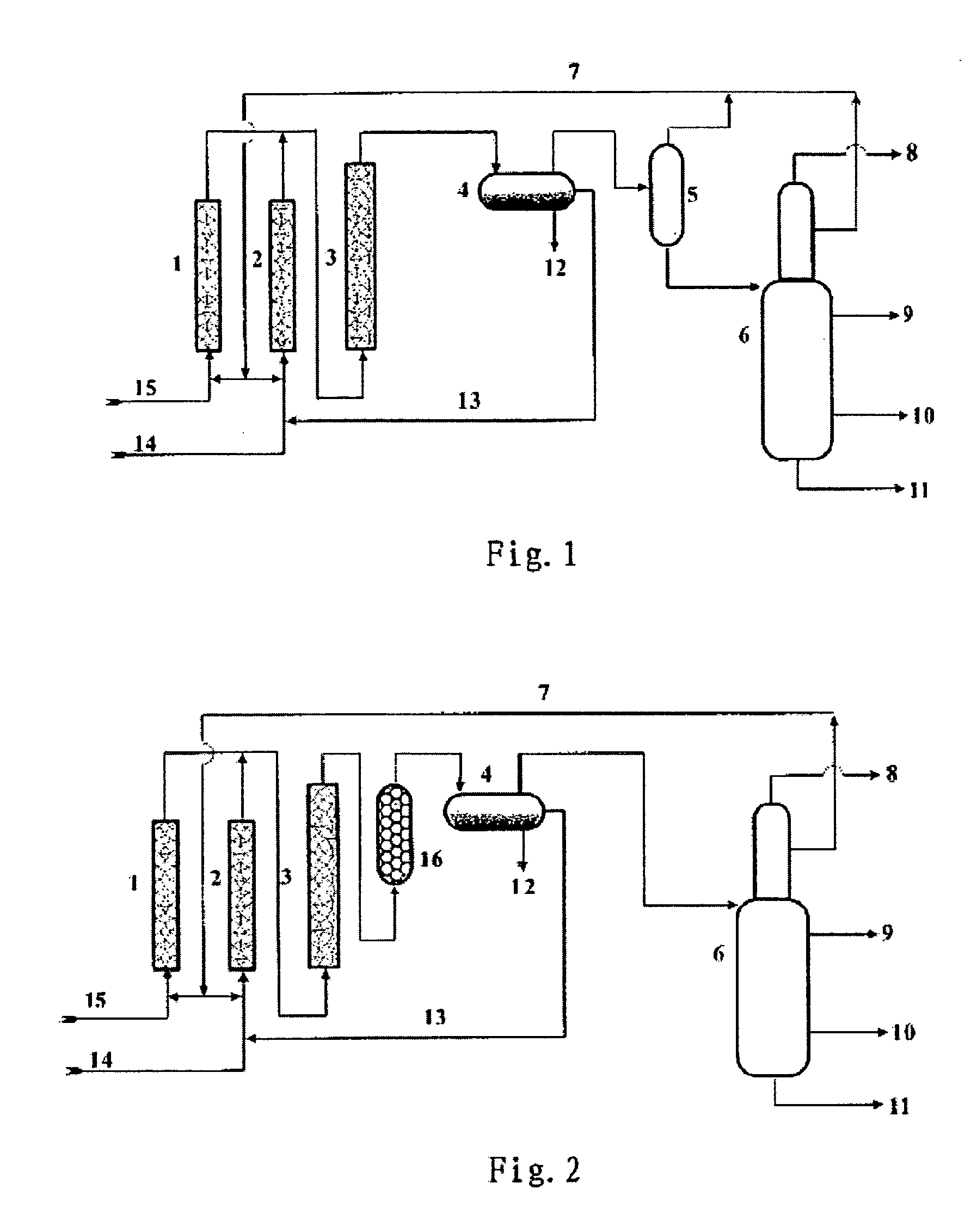Method for manufacturing alkylate oil with composite ionic liquid used as catalyst
a technology of ionic liquid and composite ion, which is applied in the direction of hydrocarbon preparation catalysts, chemical/physical/physicochemical processes, organic chemistry, etc., can solve the problems of difficult manufacturing process, complicated product post-treatment, and limited content of olefins and arenes in gasolin
- Summary
- Abstract
- Description
- Claims
- Application Information
AI Technical Summary
Benefits of technology
Problems solved by technology
Method used
Image
Examples
embodiment
[0067] In the following, the present invention will be explained in more detail with reference to application examples. The purpose of these application examples is to help the reader obtain a better understanding of the technical content and characteristics of the present invention. The present invention is not limited to these application examples.
[0068] I. Preparation of a Composite Ionic Liquid
application example 1
[0069] 0.56 mol (74.98 g) of AlCl.sub.3 was slowly added to 0.282 mol (39.76 g) of triethylamine hydrochloride. n-heptane was used as solvent. Under the protection of nitrogen, the system was stirred at room temperature for 30 min. Then, the temperature was raised to 80.degree. C., followed by 2 h of stirring until the reaction was completed, that is, until the solids disappeared completely and converted into a liquid. Upon cooling, the reaction product had divided into two phases. The upper layer was heptane, while the composition of the lower layer was the ionic liquid [NEt.sub.3H.sup.+][Al.sub.2Cl.sub.7.sup.-].
[0070] Under the protection of nitrogen, 0.056 mol (5.54 g) of CuCl was added to the synthesized ionic liquid [NEt.sub.3H.sup.+][Al.sub.2Cl.sub.7-.sup.-]. The temperature was raised to 100.degree. C., followed by stirring until the CuCl reacted completely, that is, until the solids disappeared completely and converted into a liquid. In this way, a composite ionic liquid was...
application example 2
[0071] 0.56 mol (72.6 g) of NiCl.sub.2 and 0.056 mol (7.50 g) of AlCl.sub.3 were slowly added to 0.282 mol (39.76 g) of triethylamine hydrochloride in dry air. The reaction was carried out under stirring. The reaction was an exothermic reaction, and a light brown liquid was obtained. The reaction temperature was held at 80.degree. C. Then, the system was further stirred for 2 h until the reaction was completed, that is, until the solids disappeared completely and converted into a liquid. In this way, a composite ionic liquid was obtained.
PUM
| Property | Measurement | Unit |
|---|---|---|
| temperature | aaaaa | aaaaa |
| temperature | aaaaa | aaaaa |
| temperature | aaaaa | aaaaa |
Abstract
Description
Claims
Application Information
 Login to View More
Login to View More - R&D
- Intellectual Property
- Life Sciences
- Materials
- Tech Scout
- Unparalleled Data Quality
- Higher Quality Content
- 60% Fewer Hallucinations
Browse by: Latest US Patents, China's latest patents, Technical Efficacy Thesaurus, Application Domain, Technology Topic, Popular Technical Reports.
© 2025 PatSnap. All rights reserved.Legal|Privacy policy|Modern Slavery Act Transparency Statement|Sitemap|About US| Contact US: help@patsnap.com



